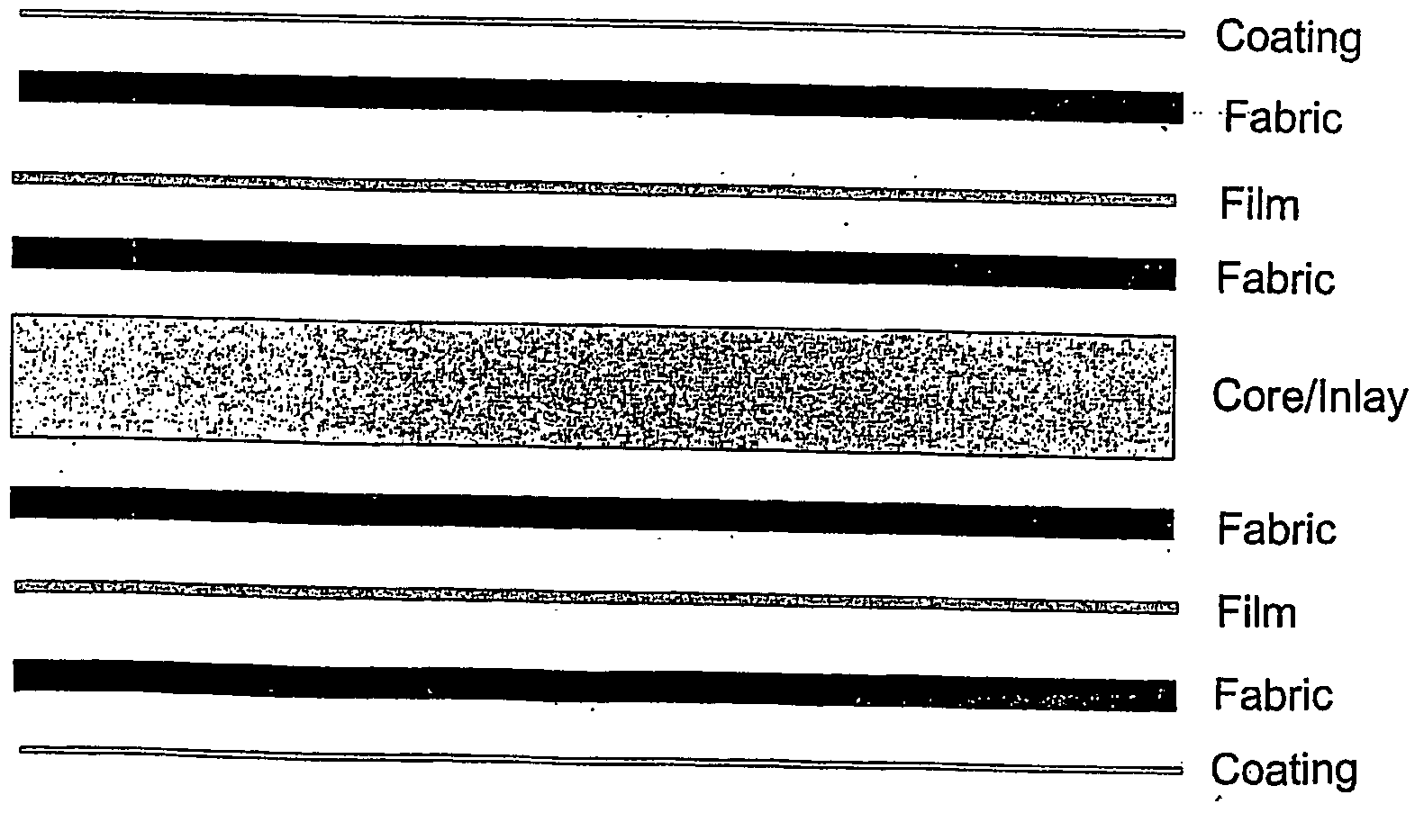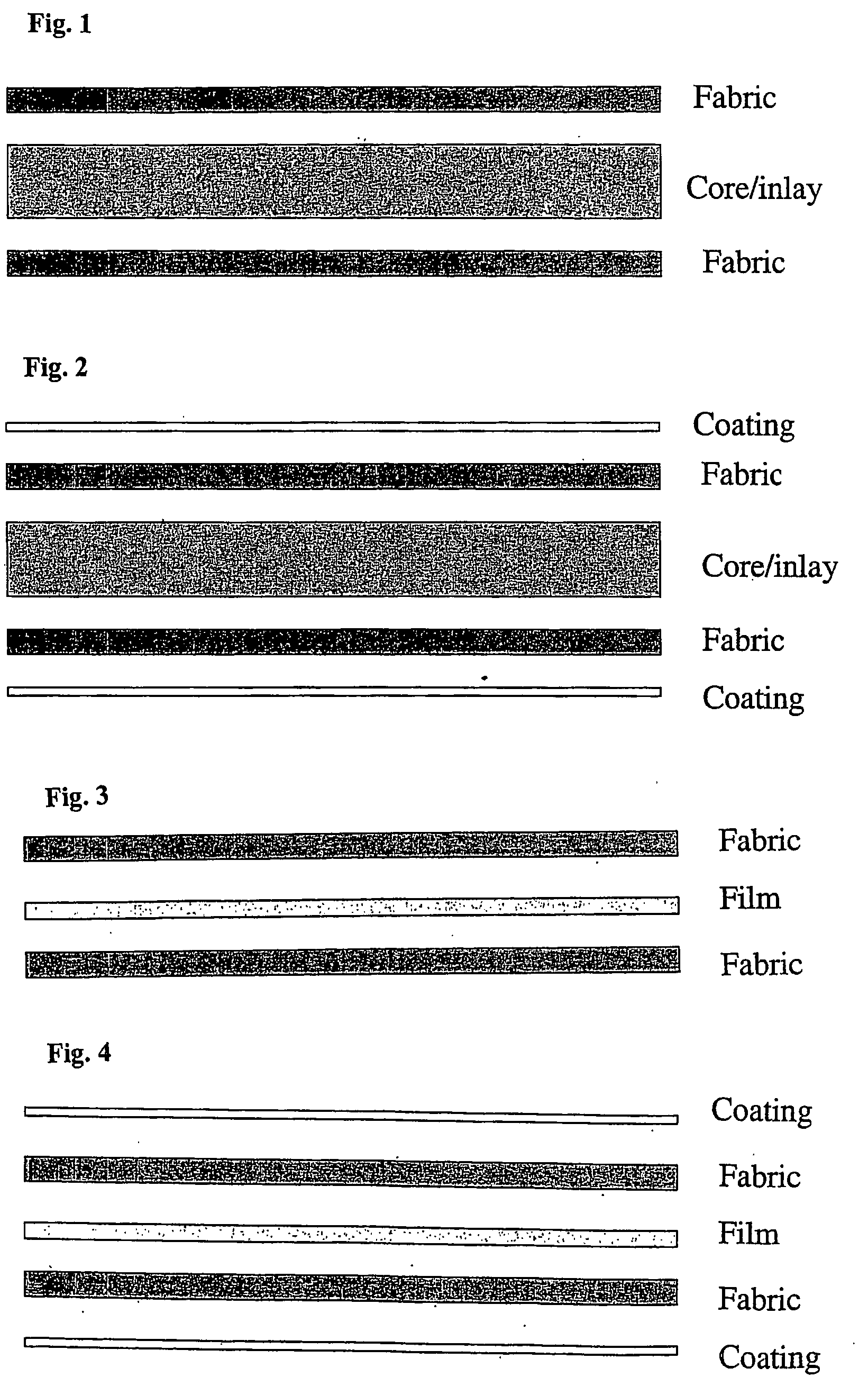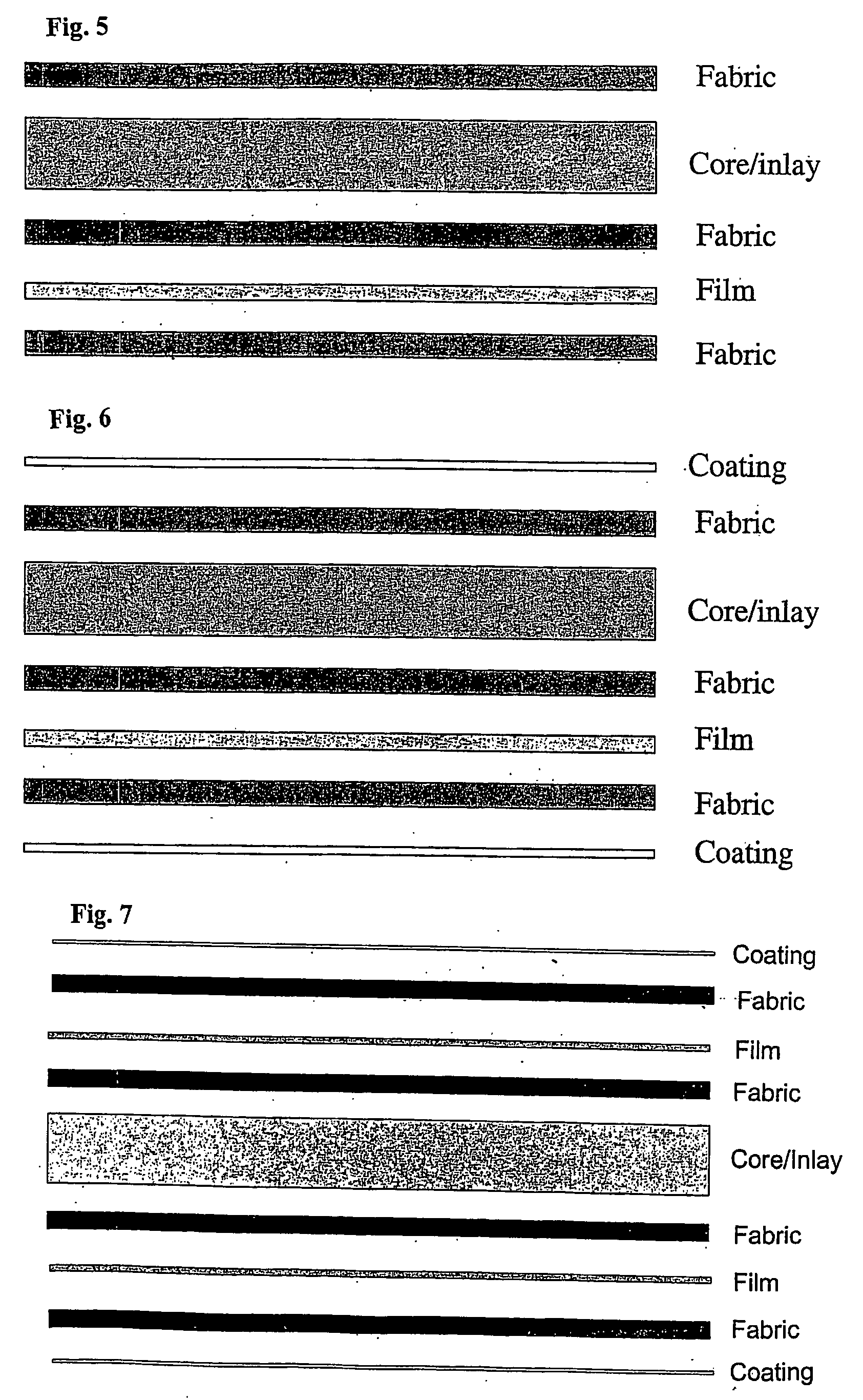Medical device comprising a bio-compatible polymeric product with a layered structure
a biocompatible, polymer technology, applied in the field of polymers and products, can solve the problems of metals and polymers having drawbacks, metals such as stainless steel, tungsten and titanium, and alloys thereof, and achieve the effect of enhancing the ability of the device to absorb
- Summary
- Abstract
- Description
- Claims
- Application Information
AI Technical Summary
Benefits of technology
Problems solved by technology
Method used
Image
Examples
example 1
Artificial Cartilage Cup
[0275] The artificial cartilage cup is an artificial joint spacer made to replace the missing or damaged cartilage so the joint can stay mobile.
[0276] The cup is based on a sandwich construction with a LDPE core reinforced on both sides with UHMWPE fiber fabric.
[0277] At the edge metal markers makes it possible to trace the cup when implanted.
[0278] The round LDPE collar of the cup makes a cup without sharp edges and captures the metal markers.
[0279] Finally a crosslinking of the polymer improves the performance of the LDPE core.
[0280] The production process includes the following steps:
[0281] Injection Moulding of Base LDPE Disk
[0282] The LDPE disk is made of pellets / granulates in the injection moulding process. The disk is approximately five mm. thick and 134 mm in diameter. One standard disk size will later be formed to different size of cups.
[0283] Pressure Consolidation with UHMWPE Fiber Fabric
[0284] Two pieces of 20×20 cm UHMWPE fiber fabric ...
example 2
[0300] The cup-shaped medical device constructed as a three layered device comprising fabric-film-fabric was tested to assess wear properties using a machine intended to simulate the tribological conditions encountered in the human hip joint.
[0301] In this example a test machine ‘8800 Instron System’ has been used.
[0302] Results: Following simulation where the device has been treated by 1,000,000 movements of a 100 Kg person, no debris of the material has been observed.
[0303] The simulation was continued to 15,000,000 cycles with a load pattern simulating walking. The load varied between 2500 N and about 150 N and the cup rotated in a rotation angle between +15 and −15 degree. The test was regularly stopped with intervals around 1 million cycles, and the specimen was taken out for inspection and photographing.
[0304] From 5 to 15 million cycles the thickness of the specimen was measured at each inspection. The wear rate is approximately 3040 μm per 1 million cycles.
example 3
[0305] The artificial polymer composite intraarticular implant with improved surface friction modalities should be bipolar with femoral component covering the cartilage area of the medial and lateral femoral condyles, and adjustments and alignment according to cruciate ligaments should be performed.
[0306] The thickness is between 2 to 4 mm. The shape mimics the articular surface of conventional total knee arthroplastes.
[0307] The tibial component is constructed in same material as above, and the shape and contour follows the meniscus including the central joint area. The implant is connected with an anterior bridge in front of the attachment of the anterior cruciate ligaments attachment on tibia.
[0308] Both components are unconstrained to each other and unconstrained to the femoral and tibial parts of the human joint.
[0309] The fixation or stability of the implant is dependent on macrostructure of the bony parts and the joint capsule. The stiffness of the implant ens...
PUM
| Property | Measurement | Unit |
|---|---|---|
| tensile strength | aaaaa | aaaaa |
| thick | aaaaa | aaaaa |
| thick | aaaaa | aaaaa |
Abstract
Description
Claims
Application Information
 Login to View More
Login to View More - R&D
- Intellectual Property
- Life Sciences
- Materials
- Tech Scout
- Unparalleled Data Quality
- Higher Quality Content
- 60% Fewer Hallucinations
Browse by: Latest US Patents, China's latest patents, Technical Efficacy Thesaurus, Application Domain, Technology Topic, Popular Technical Reports.
© 2025 PatSnap. All rights reserved.Legal|Privacy policy|Modern Slavery Act Transparency Statement|Sitemap|About US| Contact US: help@patsnap.com



